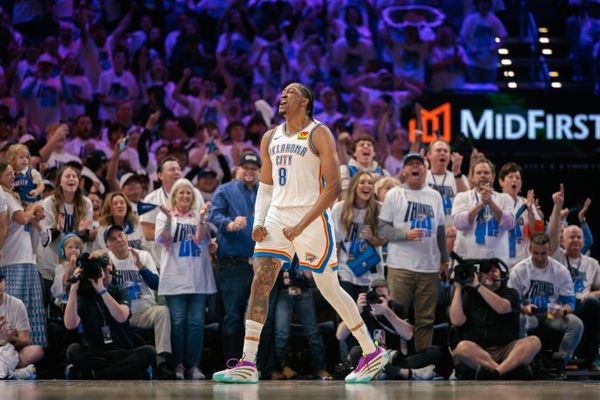
Since about 2020, a number of researchers have determined that the most salient divide in politics today is the diploma divide – that is, the division between those who have a four-year college degree and those who do not. Those who have a degree are more liberal, those who don’t are less. The former tend to vote for Democrats, the latter for Republicans.
There is a certain elegance to how simple and clean the picture is. And, by virtue of this tidiness, some insist that “educational polarization” is a better way to understand political shifts today than reliance on older, softer, messier ideas like social class. Conceptual cleanliness is certainly attractive. It’s far easier to determine who is “college educated” and who is not than it is to establish similarly defined boundaries between the working and middle classes. Yet whether we understand shifting political alignments as a function of class, as a broad social and relational concept, or education, a narrow credential category, implies a great deal about political strategy.
For one thing, it’s not a good sign that those who wish to craft a political strategy for progressives are looking for yet more ways to make class disappear from the conversation. Traditional class concepts, by their mere mention, reveal something significant about the nature of our society. To talk about “the working class” in politics reminds us that there is a relationship between the type of work people do, their labor market position, their economic interests and their ideology. To say that a political party wins the “the working class vote” is to suggest that they persuaded these voters that they stand for the interests of the humble against the interests of the elite. Yet if we focus only on education, we risk suggesting something different altogether. If we say that a given party wins the “non-college-educated vote”, without reference to social class, we risk suggesting that political behavior is related, primarily, to intelligence or achievement.
Today, many liberals are proud that their party wins the majority of college-educated voters. They see this as a sign that they are the “smart party” and that the Republicans are dumb. No doubt, there is good evidence that higher education itself leads to more progressive views. In this light, progressives might conclude that the only real political problem to be solved is that there aren’t enough educated voters to give Democrats a majority. Intuitively, that suggests partisans should focus on getting more people to go to college so that we might have a society where 51% of the people are college-educated liberals, at which point the “smart party” would have an absolute majority.
This isn’t that far from what the Democrats have actually tried to do over these last three decades – they’ve relied on consolidating their gains among college-educated voters and encouraged everyone else to go to college. Not only has this failed as a political strategy, it’s actually made the class conundrum worse. Saturating the labor market with more college-educated workers has weakened the wage premium for these workers and saddled them with an immense amount of debt that they are increasingly unable to pay off. That fueled a political rift when Joe Biden’s plans to forgive some of this debt were viewed by many blue-collar workers as an unfair attempt at rewarding the already well-off.
And by increasing the proportion of college-educated people from 20% in 1990 to over 38% in 2021, we’ve done absolutely nothing for those workers who don’t have a degree, except, in a particularly cruel irony, made it harder for them to get certain jobs that now require college credentials. Over this period those without a college degree have seen their wages stagnate or decline, and the income and wealth gap between them and their college-educated counterparts has grown wide. The very rich, meanwhile, have taken off into the exosphere, sitting on a celestial plane so high above us that they flit between the parties based on whoever they think will win.
Worse still, by making education a major part of the Democratic party’s plan for achieving social uplift and economic growth, Democrats have unwittingly surrounded themselves with voters and staffers who don’t understand the world beyond their laptops. More than the wage advantage, a college education offers workers a shield from manual work, routine layoffs and the opportunity to help shape our common culture. As a result, college-educated voters are less worried about the effects of immigration as a downward pressure on their wage, they don’t fret over free trade deals and they broadly welcome cultural changes. It’s not that the Democratic party is the “smart party”, but it is the “go to college” and “learn to code” party, the party of looser immigration restrictions and cosmopolitan norms. If it’s not opposed to the economic interests of those without a college degree, it has become ambivalent about them.
In fact, for a long time the Democratic party has focused its appeals on the edges of the working class (the very poor and the not-so-professional-class). As a result, it has neglected the views and interests of the great big hunk in the center of the wage distribution. By doing so, Democrats have neglected any substantive critique of the increasingly hi-tech hyper-global economy that has left working-class voters behind. Democrats are now seen as defenders of the status quo, representatives of the well-heeled and well-educated and totally unequipped to challenge Trump’s national-populist narrative.
Working-class disaffection with the Democrats began with blue-collar white voters. Many liberals assumed this was the political price they had to pay for civil rights. Relatedly, they also assumed that working-class voters of color would remain loyal to the Democratic party. They haven’t. Democratic party disaffection has spread from working-class whites to working-class Latino and Black voters.
What exactly will keep lower-income college-educated voters in the Democratic coalition? What does the party offer them as their economic position erodes? Meanwhile, as the wage premium for college-educated workers continues to shrink, there is reason to believe that college-educational attainment will stall and Democrats’ college-educated base will only get smaller.
An emphasis on education just can’t fill the working-class sized hole in Democrats’ electoral coalition. If they are ever to chart their way back to power, progressives need to develop a program that addresses class grievances as class grievances.
Dustin Guastella is a research associate at the Center for Working Class Politics and the director of operations for Teamsters Local 623.







